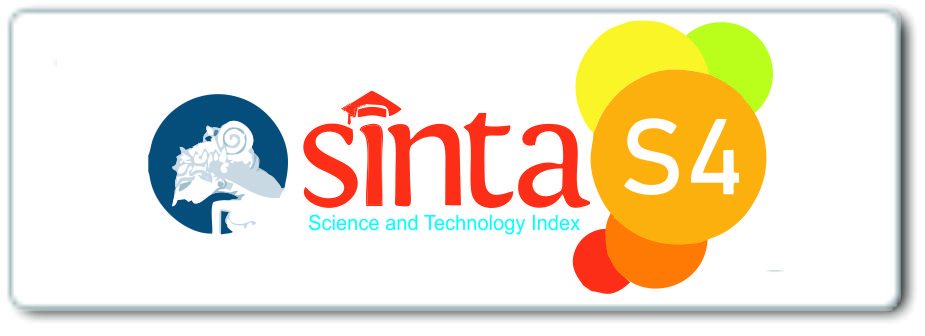BIOFILM FORMATION AND ANTIMICROBIAL RESISTANCE OF ESCHERICHIA COLI IN VITRO TOWARDS CEFTRIAXONE AND CEFIXIME
Downloads
Introduction: Escherichia coli is a Gram-negative bacteria and a most cause of nosocomial infections. Bacteria has the ability to form biofilm that may cause antimicrobe resistance. This biofilm protects the microbes from environmental conditions which make it the most cause of nosocomial infections including urinary tract infection and the infections resulted from the use of medical instruments. The aim of this experiment is to observe the presence of cefotaxime and ceftriaxone antimicrobial resistance in E. coli as a cause of biofilm formation.
Method: This study conducted three experiments of E. coli sensitivity test on cefotaxime and ceftriaxone, E. coli resistance test after a 48 hours incubation, and optical density measurement using iMarkâ„¢ ELISA Microplate Reader.
Result: The results of sensitivity experiment with antibiotic cefotaxime and ceftriaxone disk showed sensitive result in wild-type E. coli and E. coli ATCC while after 48 hours incubation E. coli ATCC remains sensitive and in wild-type E. coli result are three intermediates, one sensitive and other than that it's all change to resistance. The third experiment results were obtained from ELISA then classified into three categories. In E. coli ATCC 1 and 2, the results are mostly in high category (OD >0.240). The OD in E. coli 1 is mostly high, while results from E. coli 2 consists of one bacterium in weak category (OD <0.120), four in moderate category (OD 1.20 – 0.240), and three in high category.
Conclusion: It can be concluded that E. coli resistance test in cefotaxime and ceftriaxone after 48 hours' incubation are mostly resistant in wild-type E. coli but sensitive in E. coli ATCC.
World Health Organization. Infectious diseases [Internet]. Health Topics. 2017 [cited 2019 Sep 29]. Available from: https://www.who.int/topics/infectious_diseases/en/
Shirtliff ME, Jeff G L. The Role of Biofilms in Device-Related Infections. Vol. 3, The Springer Series on Biofilms. Los Angeles, USA: Springer; 2009. 219 p.
Wikaningtyas P, Sukandar EY, Retnoningrum DS, Parwati I. A Multicenter Surveillance and Reporting of Antimicrobial Resistance: Focus on Ceftriaxone-Resistant Escherichia coli in the Year 2012 and 2013. Int J Pharm Clin Res [Internet]. 2016;8(7):685–9. Available from: http://impactfactor.org/PDF/IJPCR/8/IJPCR
Sharma G, Sharma S, Sharma P, Chandola D, Dang S, Gupta S, et al. Escherichia coli biofilm: development and therapeutic strategies. J Appl Microbiol. 2016;121(2):309–19.
Park K, Sup W, Suk E, Won S, Hur J, Keun Y, et al. International Journal of Infectious Diseases Factors associated with ciprofloxacin- and cefotaxime-resistant Escherichia coli in women with acute pyelonephritis in the emergency department. Int J Infect Dis [Internet]. 2014;23:8–13. Available from: http://dx.doi.org/10.1016/j.ijid.2013.12.021
Aslam B, Wang W, Arshad M, Kurshid M, Muzammil S, Rasool M, et al. Antibiotic resistance: a rundown of a global crisis. Infect Drug Resist. 2018;11:1645–58.
Sayal P, Devi P, Singh K. Bacterial Colonization and Biofilm Formation among Diabetic Patients : A Therapeutic Challenge. Int J Curr Microbiol Appl Sci. 2016;5(9):174–81.
Sandle T. Antibiotics and preservatives. Pharm Microbiol. 2016;171–83.
Valsan C, Chinnan JP, Sathiavathy K. Phenotypic detection of β-lactamases in enterobacteriaceae using a 12-disk procedure. J Acad Clin Microbiol. 2013;15(1):7–10.
Djordjevic D, Wiedmann M, Mclandsborough LA. Microtiter Plate Assay for Assessment of Listeria monocytogenes Biofilm Formation. Appl Enviromental Microbiol. 2002;68(6):2950–8.
Stepanovic S, Vukovic D, Hola V, Bonaventura G Di, Djukic S, Cirkovic I, et al. Quantification of biofilm in microtiter plates : overview of testing conditions and practical recommendations for assessment of biofilm production by staphylococci. Acta Pathol Microbiol Immunol Scand. 2007;115(8):891–9.
Beloin C, Roux A, Ghigo J-M. Escherichia coli biofilms. Curr Top Microbiol Immunol. 2008;322:249–89.
Dunne WMJ. Bacterial adhesion: seen any good biofilms lately? Clin Microbiol Rev. 2002;15(2):155–66.
Munita J, Arias C. Mechanism of Antibiotic Resistance. Microbiol Spectr. 2016;4(2).
Livermore D M YYJ. Beta-lactamase lability and inducer power of newer beta-lactam antibiotics in relation to their activity against beta-lactamase-inducibility mutants of Pseudomonas aeruginosa. J Infect Dis. 1987;155(4):775–82
Copyright (c) 2022 Jihan Kalishah, Dominicus Husada, M Vitanata Arfijanto, Agung Dwi Wahyu Widodo

This work is licensed under a Creative Commons Attribution-ShareAlike 4.0 International License.
Copyright (c) Author
1. The journal allows the author to hold the copyright of the article without restrictions.
2. The journal allows the author(s) to retain publishing rights without restrictions.
3. The formal legal aspect of journal publication accessibility refers to Creative Commons Atribution-Share Alike 4.0 (CC BY-SA).






















